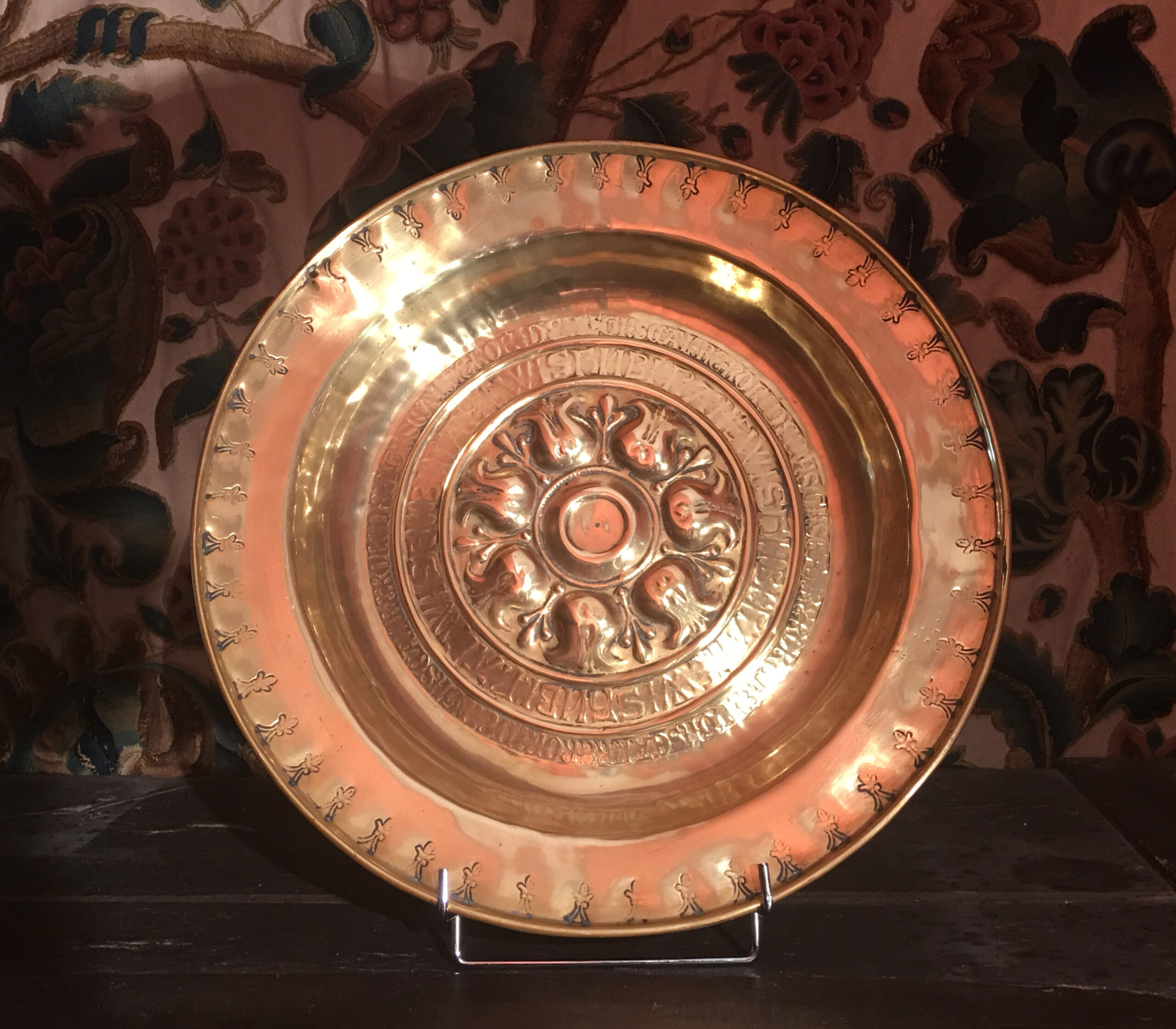Description
Dinanderie, the name given to this production, comes from the Belgian city of Dinant-sur-Meuse where was located a prolific corporation of copper beater during the 12th and 13th centuries.
The name dinanderie designates works made of beaten metal – coper and brass – but also works made of cast metal – bronze and brass – produced by the same artisans.
From the Middle-Ages onwards the coppersmiths produce religious artefacts such as insence holders and aquamaniles. With the production of beaten brass plate during the 15th century this corporation shows a strong growth. The spreading of these alm dishes covers all of Christian Europe.
During the 15th and 16th centuries plates with embossed decor became very popular especially those made in Nuremberg, Germany considered to be the most beautiful but also from central Europe or northern Italy. Not exclusive to the religious use this dishes could also be used as light reflector or decorativ element.
This beautiful alm dish matches perfectly the production of Nuremberg’s workshops.
The central dome, called ombilic is framed by a characteristic embossed decor. Following a traditional pattern we can see godroons, fine German Gothic letters and flowers and stars on the rim. As done in Germany to strengthen the rim, the edge of the plate is folded back on an iron wire.

